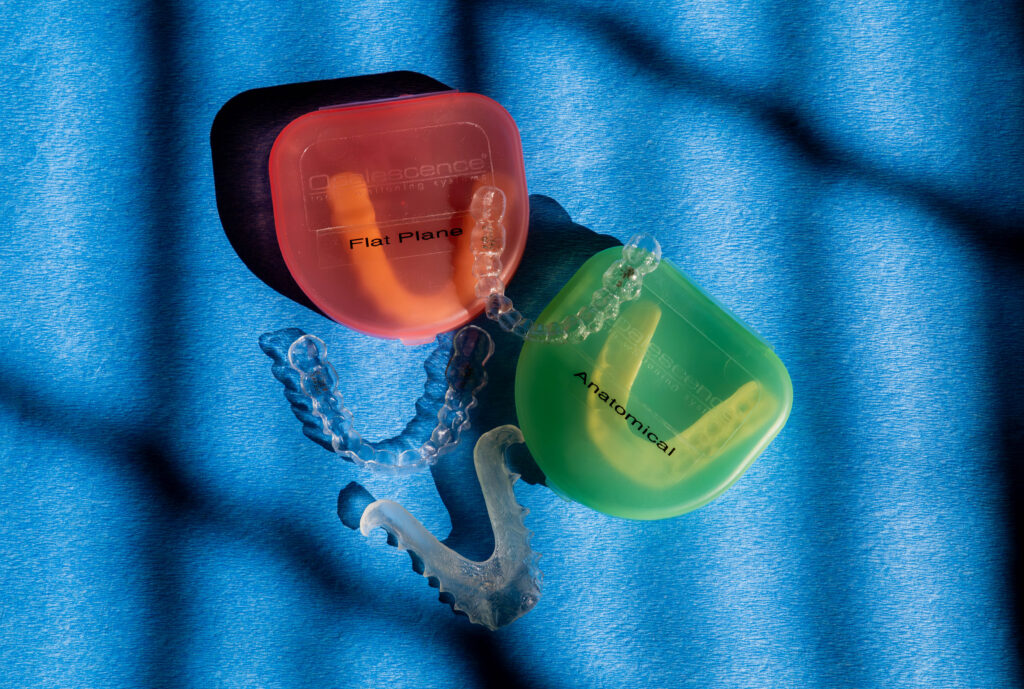Occlusal “Bite” Therapy
Bite therapy is often employed to address common symptoms of occlusal disease, including tooth wear, sensitivity, cracks, loose or broken teeth, sore muscles, jaw joint pain, and headaches.
When you chew, your upper and lower teeth come together and exert pressure on the skull. If you have missing, uneven, or misaligned teeth, the jaw muscles must work harder to bring the teeth together. This strain is further exacerbated if you also clench or grind your teeth.
The initial treatment typically involves “bite splint” therapy, where a hard acrylic appliance is custom-made to fit snugly over either the upper or lower teeth. This appliance often creates a temporary perfect bite, alleviating symptoms and enhancing patient comfort.
In subsequent treatment steps, Dr. Sander uses the data gathered from the bite splint to conduct a new bite evaluation. He may suggest reshaping certain teeth to ensure a smoother, more cohesive bite that mimics the ideal position achieved with the bite splint.
In some cases, teeth that have sustained significant damage or wear may require restorative treatments to return them to their proper form. If needed, Dr. Sander carefully assesses the restorative needs and recommends the most conservative and aesthetically suitable options for the patient to consider.

About Occlusal Disease
There are three main diseases that can harm your teeth: decay (cavities), periodontal (gum) disease, and occlusal (bite) disease. While most people are familiar with the first two, occlusal disease is less obvious. Its symptoms—such as wear, sensitivity, cracks, loose or broken teeth, sore muscles, painful jaw joints, and headaches—are often not linked to the true underlying cause: a poor bite.
Dr. Sander has dedicated much of his career to studying advanced dental care at the Pankey Institute and other related institutions to treat occlusal “bite” disorders using the most minimally invasive methods. Dr. Sander believes that understanding the current state of your bite will influence your treatment decisions, which can affect the health of your teeth five, ten, twenty, or more years into the future.

